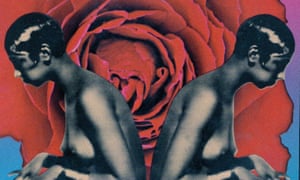Critical race theory analyzes literature from a racial perspective. In other words, analyzing an author’s intention to which race of audience members he/she is writing for. The critical race theorist, Toni Morison, argues in her scholarly article, Playing in the Dark;
There seems to be a more or less tacit agreement among literary scholars that because American literature has been clearly the preserve of white male views, genius, and power, those views, genius, and power are removed from and without relationship to the presence of black people in the United States – a population that antedated every American writer of renown and was perhaps the most furtively radical, impinging force on the country’s literature. (Richter 1791).
As a reader reading Morrison’s argument, she is arguing that when analyzing the literary elements American authors use to write novels, they are demonstrating their work of literature to a white American audience. One text, in particular, where Critical Race Theory occurs the most, which also correlates with Morrison’s argument in Playing in the Dark, is Ishmael Reed’s Mumbo Jumbo.
In the novel, Mumbo Jumbo, Reed describes a black info virus, “Jes Grew,” manifesting throughout America, where people of different races are not only bonding with one another, but also, dancing with one another. This novel not only commemorates “The Harlem Renaissance,” where African Americans from southern regions of North America were moving to New York in large numbers from southern regions, but also describes African Americans in a positive light, by engaging white Americans that they are no different, and that they are equal to African Americans. When analyzing the literary elements of this novel, there are a few lenses of “Critical Race Theory.”
For example, white characters in the novel are not only determined as equal amongst readers, but when reading about their personal history, they are acknowledged as superior beings amongst black characters. In the beginning of Mumbo Jumbo, the mayor of New Orleans, Harry, is described as;
A True sport, the Mayor of New Orleans, spiffy in his patent-leather brown and white shoes, his plaid suit, the Rudolph Valentino parted-down-the-middle hairstyle, sits in his office. (Reed 3).
As a reader reading that specific passage when the Mayor of New Orleans is being described, I think about a white man who is very superior and important. The way that this opening passage also correlates with Morrison’s argument regarding American literature being dominant towards whites, is that this Mayor is being acknowledged already due to his physical appearance. Another example where a white character gets acknowledged, is in chapter thirty, where Reed introduces a character named Biff Muscle White. In Mumbo Jumbo, Reed describes Muscle White when he says:
“The man who tamed the wilderness” and much decorated combat officer of World War 1, now curator of the New York Center of Art Detention and part-time consultant to the Yorktown police. (Reed 107).
The Notion of “Race” in Omeros and Mumbo Jumbo ~ Response paper
Race is a way to classify humans into distinct groups regarding there culture, ethnicity, and socio-economic standings. In the novels, Omeros and Mumbo Jumbo, the notion of race has been something metaphorically visible to a reader’s perception regarding characters life stories, and behaviors that manifest into both novels. As a reader reading Omeros and Mumbo Jumbo, I can personally argue that the notion of race has been something brought into both novels through characters actions and life stories.
In Derek Walcott’s Novel, Omeros, the novel takes place in St. Lucia, and Walcott applies fictional characters like Philoctete, Hector, Ma Kilman, Seven Sea’s, Achille, Helen, Theophile,
and Major Plunkett, who give readers a visual description about daily life that occurs in St. Lucia.
The way that race plays a vital role in Omeros, is in the beginning, when Walcott describes Philoctete being the main attraction for tourists when saying; “Philoctete smiles for the tourists, who try taking his soul with their cameras.” (3, Walcott). The way that race plays a crucial role in those lines, is because tourists, who are obviously American’s, are on an excursion to St. Lucia, and are taking photographs of the native people that currently live in St. Lucia.
The reason why I feel that those lines have a lot to do with race, is because for somebody like myself, who has travelled to Africa, Europe, South America, Central America, Canada, and the Caribbean, where this novel takes place, many tourists have a need to take photographs of the native people. From a notion of race, it can have something to do with demonstrating selfishness, where Foreigners outside of St. Lucia feel the need to take photographs of natives from other country’s, because they never seen a real native individual living in his/her country. Another reason why Foreigners from various parts of the world feel a need to take pictures, is to demonstrate being ethnocentric towards others. In other words, for a white North American to go on vacation, and to take photograph’s of a foreigner would demonstrate being ethnocentric, because what others have a tendency to do, from various parts of the world, is to look at other natives, and say that they are better then a particular native. The novel Omeros, is one novel where race has been a manifestation through characters lives and actions. Other then the beginning of Omeros, the other novel, by Ishmael Reed, Mumbo Jumbo, is a novel that pertains to race through characters lives and actions.
Final Paper
Exploring the Americas Through Race: An Ethnic Study of Ishmael Reed’s, Mumbo Jumbo and Leslie Marmon Silko’s, Ceremony
An ethnic study analyzes the way racial identity has affected twentieth century American literature. Critical race theorist/ethnic scholar; Toni Morrison, in her publication, “Playing in the Dark,” in relation to Henry Louis Gates Jr.’s publication, “Writing, ‘Race,’ and the Difference It Makes,” not only argues how American Literature is written for a white audience, but also analyzes how “Race” determines a character’s class standing and personality in American literature. Morrison and Gates’ views can be applied throughout any genre or time period of American Literature. Two novels, in particular, where Morrison and Gates’ notion towards race applies itself, is in Mumbo Jumbo and Ceremony.
In Reed’s Mumbo Jumbo, a black information virus called “Jes Grew,” which signifies “Just Grew” A.K.A., “Mumbo Jumbo,” flourishes throughout the St. Louis, Chicago, and New York City district, where individuals of various races and ethnicities are socializing amongst each other. The reasons why Mumbo Jumbo pertains to critical race theory/ethnic studies in many ways, is not only to commemorate “The Harlem Renaissance,” where African Americans were migrating to Northern regions of North America, and demonstrating their teachings to white Americans, but also teaching Anglo Americans about African American culture. In essence to the literary scene of “The Harlem Renaissance,” the goals that many Harlem Renaissance writers like Ismael Reed, creates characters and story lines that pertains to African American struggles towards white supremacy, and names that signifies African American belief’s. The one novel that pertains to African American struggles and beliefs is in Reed’s Mumbo Jumbo.
As for characters in Mumbo Jumbo and pertaining them to race in particular, the black characters; like Papa LaBas, who plays the role of a leading activist in the “Mumbo Jumbo” movement throughout America. Berbelang, who plays the role of LaBas’ former partner in this activist movement, but leaves because he felt as if this movement was not going anywhere. Julius, who plays the role of a doorman, that claims he knows W.E.B. Dubois. Thor Wintergreen, who plays the role of being a part of the “Mumbo Jumbo movement.” And Abdul, who plays the role of an angry militant and alcoholic, and it’s arguable that Abdul is angry because of African Americans being perceived as lower class individuals.

